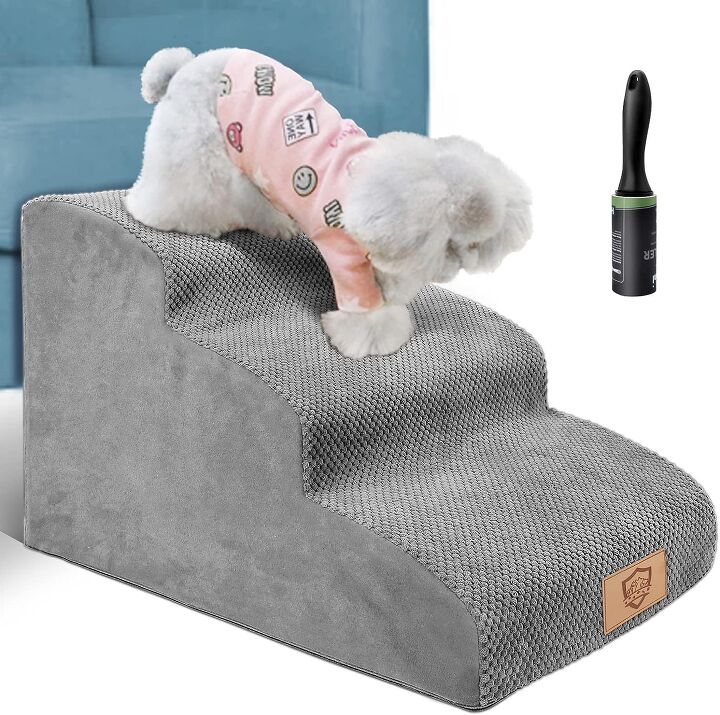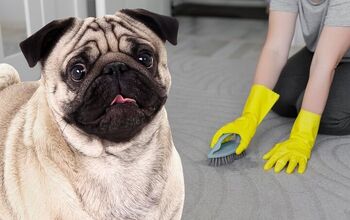What to Know About Osteoarthritis in Cats

Osteoarthritis, also referred to as OA, is a condition that’s common in cats – experts have found that 90% of kitties over the age of 12 have it. And because cats may hide the signs, it can be overlooked, so it’s a good idea to learn about the symptoms and keep an eye out for them, especially as your pet gets older. The good news is, if your feline friend is diagnosed with this condition, there are things you can do to help her experience less pain.
What Is Osteoarthritis in Cats?
Osteoarthritis affects the joints, causing the breakdown of cartilage, pain, and inflammation. Various parts of the body can be affected by OA, such as a cat’s knees, elbows, shoulders, ankles, and hips.
Unfortunately, osteoarthritis is a degenerative condition. It is chronic and progresses over time, so catching and managing symptoms is key.
What Causes Osteoarthritis in Cats?
Several things may lead to osteoarthritis in cats, such as injuries, abnormalities in the joints or gait, daily wear and tear, and being overweight or obese. It can be hard to figure out exactly what caused it in a particular cat.
Symptoms of Osteoarthritis in Cats
The symptoms of osteoarthritis in cats can be missed by pet parents, especially if a kitty does her best to hide the discomfort. But you might notice signs like the following:
- Not wanting to be held or touched on certain parts of the body
- Changes in behavior, such as being less active, hiding, or sleeping more
- Changes in personality
- Difficulty grooming
- Difficulty moving, walking, running, or jumping
- Not using the litter box
- Loss of appetite and weight loss
- Limping
- Joints that are swollen or stiff
- Vocalizations
- Posture changes
Treatments for Osteoarthritis in Cats
Your veterinarian can examine your cat and run tests, such as X-rays, to diagnose osteoarthritis.
There are treatment options that your vet might recommend to reduce inflammation and pain, and there are steps you can take to help reduce your pet’s discomfort. Your veterinarian may advise addressing this problem from multiple angles.
- You can help your cat get around more easily and feel better by using products, such as litter boxes, ramps, orthopedic beds, or heated beds, that are designed for seniors or pets with joint problems. You can also consider switching to raised food and water bowls to make it less painful for your pet to eat and drink.
- Changes to your cat’s environment, such as making it simpler for your kitty to access her food, water, and litter box, can make a difference, especially if she currently needs to go up and down stairs to do so.
- If your cat is overweight or obese, your veterinarian can help you come up with a weight loss plan that will be safe, gradual, and effective for your unique pet. This might include changes to your kitty’s diet and exercise/playtime routine.
- Certain therapies, such as hydrotherapy, massage, acupuncture, chiropractic, or physical rehabilitation, might be recommended to help ease pain and improve mobility.
- Medications might be prescribed to tackle pain and inflammation. Your veterinarian might recommend supplements, such as glucosamine and chondroitin, as well. Or, they might suggest giving your cat a food that contains ingredients, such as omega-3 fatty acids, that may be helpful. Always give medications and supplements according to your vet’s instructions, and let them know if side effects occur.
- Surgery might be recommended, depending on your cat’s condition and the cause of the osteoarthritis.
Products That Can Help a Cat with Osteoarthritis
If you notice that your pet isn’t moving like she used to, this might be a sign that she has osteoarthritis. You might notice that she can’t jump onto the sofa with ease anymore, or she might refuse to jump altogether. In the same way, she might not want to go up and down stairs, or she might not be able to play like she used to. Even lying down and getting up might be more of a challenge.
There are products for senior cats, such as ramps and stairs, that can make it easier for your kitty to get on the bed or sofa when she has difficulty jumping. An example is the Pet Gear Stramp Stair and Ramp Combination, which is lightweight, easy to move and clean, and features supertraX to provide traction.
For cats who prefer stairs instead of ramps, there are options like the Topmart 3-Tier Large Sponge Foam Pet Ramp/Dog Stairs, which is designed to reduce stress on the joints. The soft steps are sloped, so your cat might find it easier to get up and down, and the corduroy cover can provide some traction.
Also, when your cat is in pain from OA, you might notice changes in her behavior and personality. If she isn’t using the litter box, for example, it might be because it hurts to get into and out of it, so switching to a box that’s low enough for her to get in and out with ease is a great idea.
One option to consider is the KittyGoHere Large Litter Pan, which is 5 inches high on three sides but just 3 inches high in the front so your cat can more easily walk in and out. Other sizes are available, too, so you can find the one that’s right for your pet.
There Are Ways to Help a Cat with Osteoarthritis
Although there is no cure for osteoarthritis, if your cat has been diagnosed with it, you can work with your veterinarian to come up with a strategy that will help her get relief and get her moving more comfortably.
Join the PetGuide community. Get the latest pet news and product recommendations by subscribing to our newsletter here.

Lisa Selvaggio is a freelance writer and editor, and our resident cats-pert, with certifications in pet nutrition and pet first aid. She enjoys producing content that helps people understand animals better so they can give their pets a safe and happy home.
More by Lisa Selvaggio

























